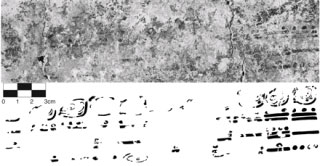|
|

Not The End Of The world As We Know It
To: Kayla

Hollywood films and sensationalists have been prophesizing about the predicted day of humanity’s demise on December 21, 2012, which is alleged to be based on the Mayan calendar.
But Tony Aveni, professor of astronomy and anthropology and Native American studies, has become the voice of reason with a recent discovery.
A paper co-authored by Aveni and published in the May issue of Science has drawn much media attention.
It highlights the excavation of an area in Xultun, Guatemala, that has a “wall painting accompanied by a numerical table and a series of long numbers that appear to have functioned like those found in astronomical tables in the codices discovered in the earliest known Mayan calendar.
This wall painting, the oldest Mayan calendar to be found by scientists, foresaw another 7,000 years beyond December 2012, giving humanity a generous several thousand years longer than previous calendars.
Why would they go into those numbers if the world is going to come to an end this year?
Aveni recently pointed out to ABC News. “You could say a number that big at least suggests that time marches on”
The outpouring of concern over the sensationalized Mayan Doomsday prophecy has roots in misunderstood Mayan time-keeping methods, which, unlike modern-day calendars, worked cyclically.
The ancient people never actually calculated a definitive end; rather, they used the stars to chart cycles that ended in rebirth, or renewal.
December 21, 2012, is not the end, but a new beginning.
“It’s like the odometer of a car, with the Mayan calendar rolling over from the 120,000s to 130,000, “explained Aveni.
The car gets a step closer to the junkyard as the numbers turn over; the Maya just start over.
Anthony Aveni is the Russell Colgate professor of astronomy and anthropology at Colgate University and author of the new book, The End of Time: The Maya Mystery of 2012.
Read more : http://www.archaeology.org/0911/2012/
